I actually love music beyond my ability to play it. That’s kind of a blessing and a curse, idn’t it?
I had been contemplating my need for a mandolin earlier in the day, as I walked passed the chicken house one afternoon. After spying my crop of gourds hanging from the vines covering the chicken yard fence I stopped to admire ’em.
Then something hit me.
Do you ever see things laying around the farm and say to yourself, “I got an idea” (or an “idey”, as my grandma used to say)?
Well, I saw my mandolin, hanging on the fence! Sort of; actually a few hours of work later’s when I literally began to see it.
What else can you call it…but a gourdolin.

First, holes are drawn on the gourd and cut out using a coping saw or hand held jigsaw
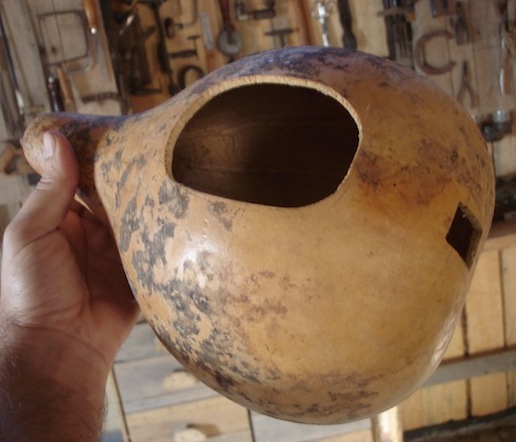

Then the fretboard: Glue and clamp together 4 layers of 3/4 inch stock detailed below (we’ll just call it 1 inch stock). Wait at least 24 hours for it to dry, then cut it out on a bandsaw.


I pried some frets off a worthless old guitar and recut them to fit. If you can’t find some old frets to reuse, you can also just glue wire to fretboard with wood glue. As for where to place the frets, this might be the trickiest part…but you can handle it. To find the proper placement for each fret, you’ll need to put at least one string on and tune it to any note using another instrument or electronic tuner, whatever. Then put a finishing nail or piece of wire temporarily about where the 1st fret should go. Lightly press the string down to the temporary fret and play it, listening for the note that’s exactly one half step above the original note the string is tuned to. Then mark where that temporary fret is sitting. Then go up another half step and mark the next one, then so on and so on until you have as many frets as you think you’ll need (at least 7 frets). If you’re not familiar with tunings and half steps and all, ask someone who is to give you a little hand with this part. (You can pay ‘em back with some gourd seeds.)
The middle picture shows the angled cut of the fretboard; it doesn’t have to be perfect…just whatever suits you. Head nut is made of bone (deer I think) with grooves cut into them with a coping saw. Then filed if necessary. Be careful; bone is brittle.
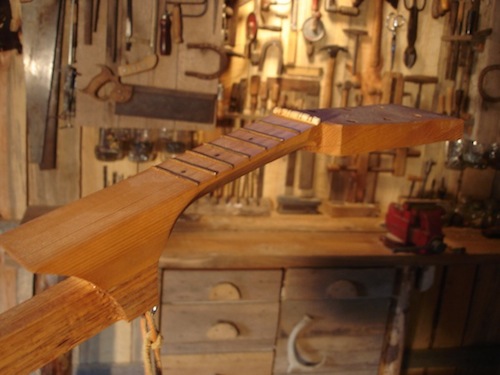

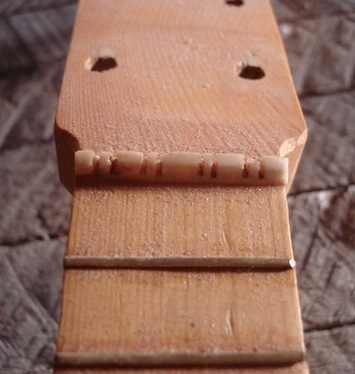
The neck structure runs all the way through the gourd body.
I also fashioned a little piece of wood that screws into the central support, and is fit up against the gourd shell to brace it once the pressure of tuned strings is applied to the bridge.

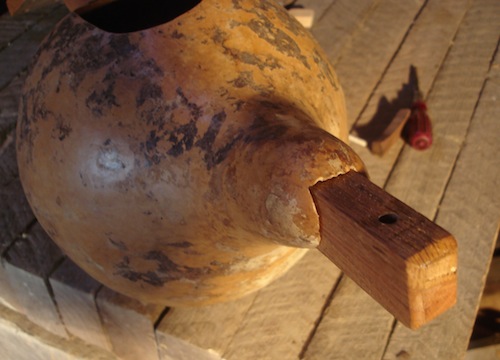

The tailpiece can be made out of a flattened tin can. This one was made from flattened sheet metal, with a hole drilled through it for the bolt that holds it to the support. A finishing nail holds the loop of the strings.
The bridge is a black walnut base thats underside is cut and sanded to contour the outer shell of the gourd. The bone bridge (also grooved for 4 string pairs) sits in the tray atop the walnut base.
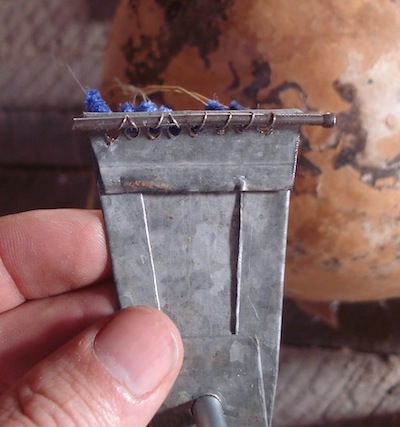


Black walnut is also used to fashion tapered pegs. Drill a tiny hole in the tapered end of the peg to hold the string.
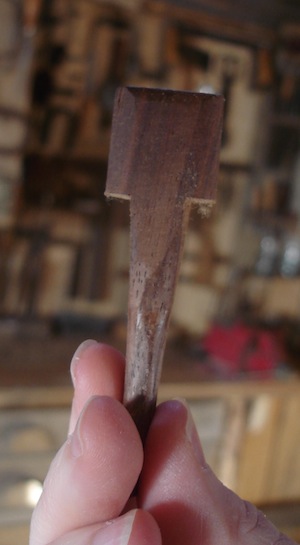

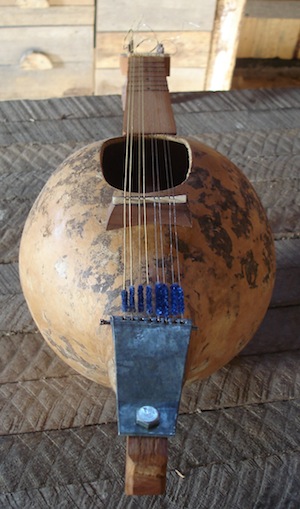
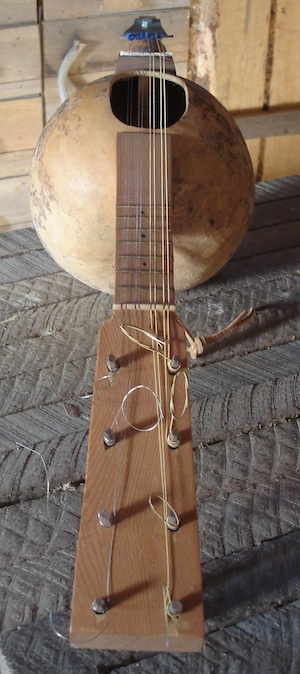
The gourdolin, along with several other homemade instruments, are heard in the songs used in the Farm Hand’s Companion Show. To see other “homespun” instruments like a gourd fiddle, a deerskin banjo, or canjos and panjos, take a look at the Music of the Farm Hand’s Companion Show page.
posted by Pa Mac, copyright 2012, Caddo Heritage Productions

